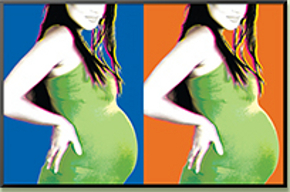When More Is Not Better – Why You Should Transfer One Embryo At A Time


If you have a 50% chance of pregnancy with one embryo then your chances with two embryos is 100%….right?
Wrong!
Mother Nature and science are a bit more complicated than that. Although pregnancy rates are climbing higher and higher, even with the latest technology and the best programs – we are still very far from 100%. For many patients who have a good prognosis for success: people using egg donors, people who are young with good egg quality, people who have PGS normal embryos (embryos that have normal chromosomes by Preimplantation Genetic Screening) etc., the American Society for Reproductive Medicine (ASRM) is recommending transferring just one embryo at a time.
Why?
Can there be too much of a good thing?
YES! – When it comes to embryos – two can be worse than one!
I get this question every day. Below is a typical email from one of my patients and my answer below.
Patient:
Hi Dr. Chen,
Hope you are having a good weekend. I believe my nurse reached out to you. We haven’t really discussed the number of embryos that would be transferred. With that said I would like to give myself the best opportunity for a successful pregnancy.
I don’t want to have to another cycle all over again since I’m not getting any younger. Would you consider transferring 2 embryos?
Thanks so much,
______
My Reply:
Hi _______!
With donor embryos that are tested (normal chromosomes by PGS) transferring two embryos at once results in a 70-75 % pregnancy rate with a very high twins rate. Taking those same two embryos, transferred one at a time, results in an approximately 93% cumulative pregnancy rate with a much lower rate of complications. Although most twins do well, twin pregnancies are very high risk for both the mom and baby with much higher miscarriage, birth defect and neonatal death rates than singleton pregnancies.
This is the reason that ASRM guidelines recommend only transferring one embryo at a time when you use egg donation or are transferring embryos that are normal by PGS. It is much safer and more effective. Transferring two embryos at a time is essentially wasting an embryo and putting you at risk. This would be medically irresponsible and against ASRM guidelines. So we only put in one donor embryo at a time. Hope this makes sense to you. We want you to be pregnant as quickly and safely as possible also!
Best,
Serena H. Chen, M.D.
Conclusion:
Every person’s situation is different. You must take into account numerous factors. Are you using your own eggs or using donor eggs? Have you done IVF before? What are the pregnancy rates at your IVF program? What does your doctor recommend and why? How do your embryos look? What is your story? Are you infertile? (Patients may be using IVF for other reasons – like our LGBTQ patients, or our single patients or our patients who are trying to avoid transmitting a genetic disease). Do you have a history of miscarriage? Are you at risk for pregnancy complications? How do you feel about multiple pregnancy? If you were pregnant with triplets (remember IVF embryos have a higher rate of splitting – so putting in two embryos could result in triplets), would you consider multi-fetal reduction? Given increasingly better technology and improving pregnancy rates, single embryo transfer is making more and more sense for more and more patients. IVF itself is not that risky – but pregnancy can be, and more than one pregnancy is much more than twice the risk. In this case, more may actually be less. Talk to your doctor about her recommendations for you. And Good luck!
Have questions and like to book a consult with Serena. Please contact us at (973) 322–8286 or fill out our contact form.
A graduate of both Brown and Duke Universities, Dr. Chen serves as Director for the Division of Reproductive Medicine in the Department of Obstetrics and Gynecology at Saint Barnabas Medical Center and as well as, here at IRMS.
Serena is a strong advocate for access to reproductive care for all, and a champion of every patient’s right to be well informed and intimately involved in their treatment decisions. She is a go-to authority on fertility and women’s reproductive health, a featured and respected contributor to many news outlets.



 Blog
Blog
 0
0 

